Acer Predator Triton 700 Max-Q Gaming Laptop Review
Why you can trust Tom's Hardware
Gaming Benchmarks
Alien: Isolation
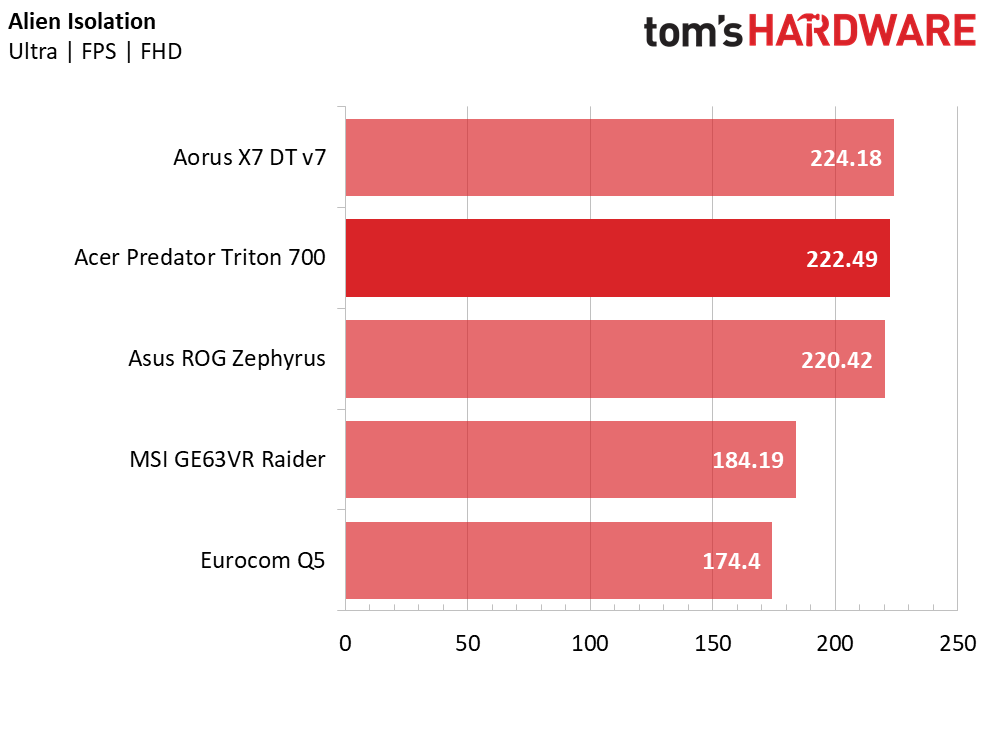

Alien: Isolation is a relatively undemanding title, fitting as we ease our way into the gaming benchmarks. The Acer Predator Triton 700 matches the Asus ROG Zephyrus and Aorus X7 DT v7, with less than 1% difference in average frame rate. However, the Max-Q laptops suffer at UHD. Because Alien: Isolation is so easy to render, the Triton can still maintain more than 60 FPS at UHD; we'll soon find that this won't always be the case.
Ashes of the Singularity
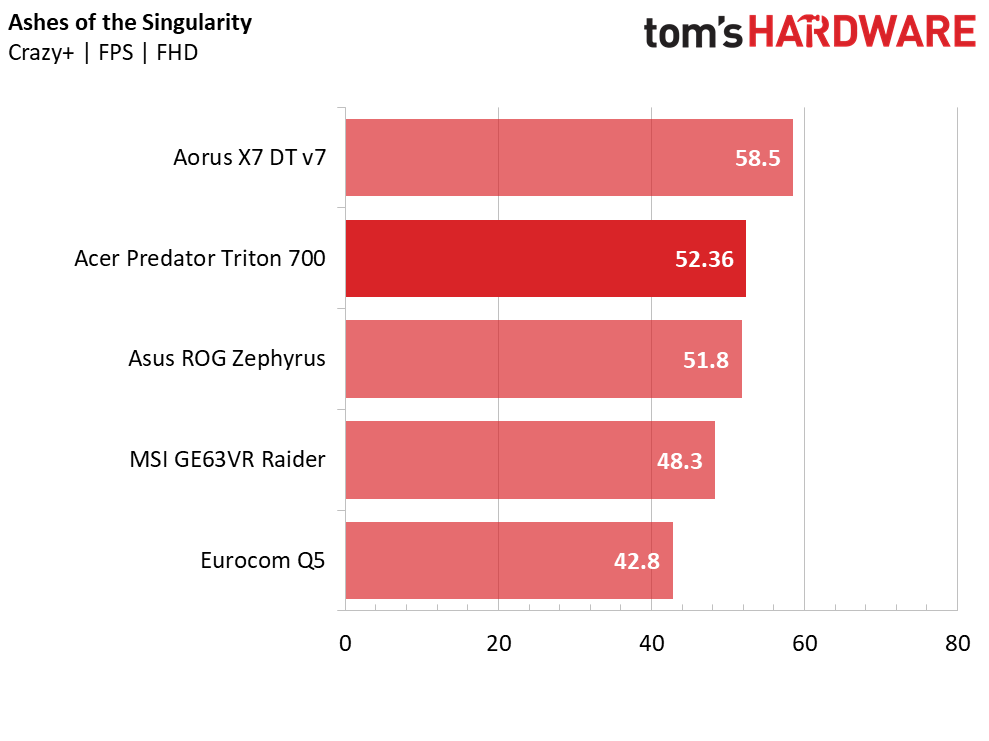
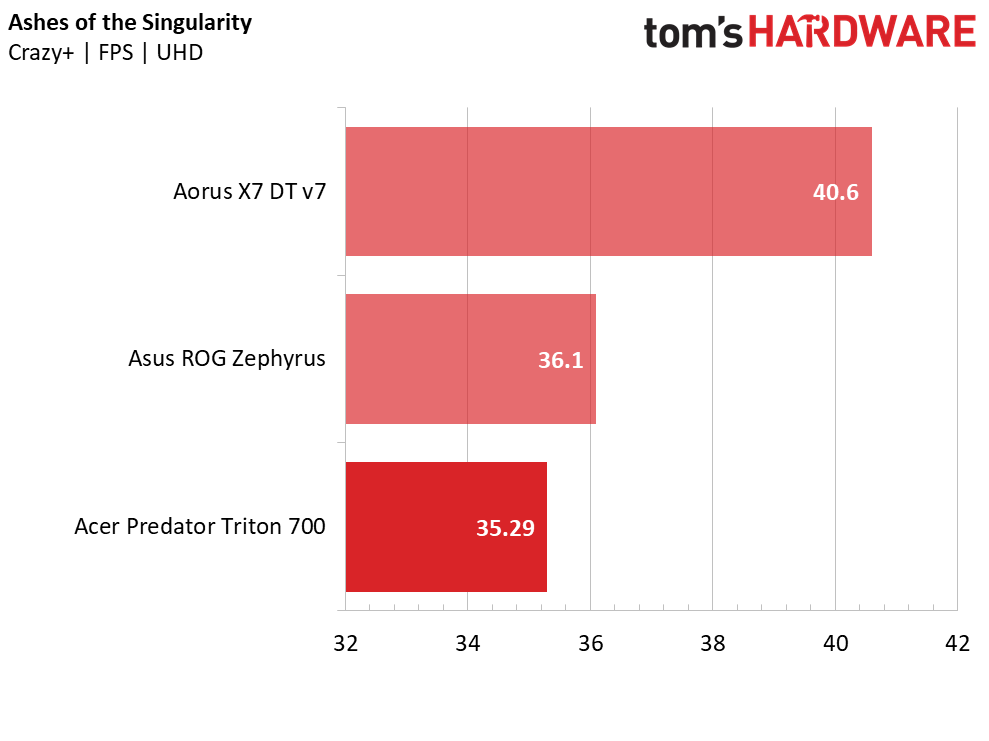
When we said soon, we really meant right away. Ashes of the Singularity is one of the more demanding titles in our suite, stressing various parts of the platform. The Aorus X7 can't maintain 60 FPS here at our max settings, and the Triton and Zephyrus perform about 12% slower, with frame rates in the low 50s. The GTX 1080 Max-Q laptops perform more similarly to the GTX 1070-based MSI Raider than they do the Aorus.
Running at UHD hurts performance even further, with the Triton losing nearly 50% of its performance due to its limited power consumption. The Aorus GPU faces no such restrictions, therefore delivering 40 FPS, still a 44% performance loss.
DiRT Rally
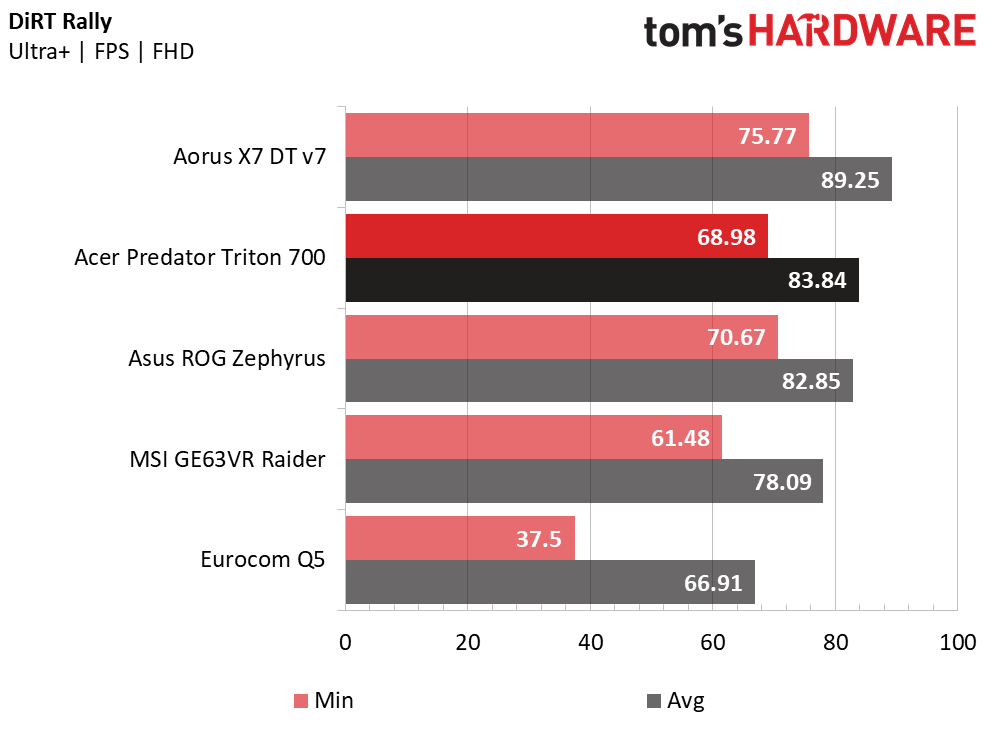
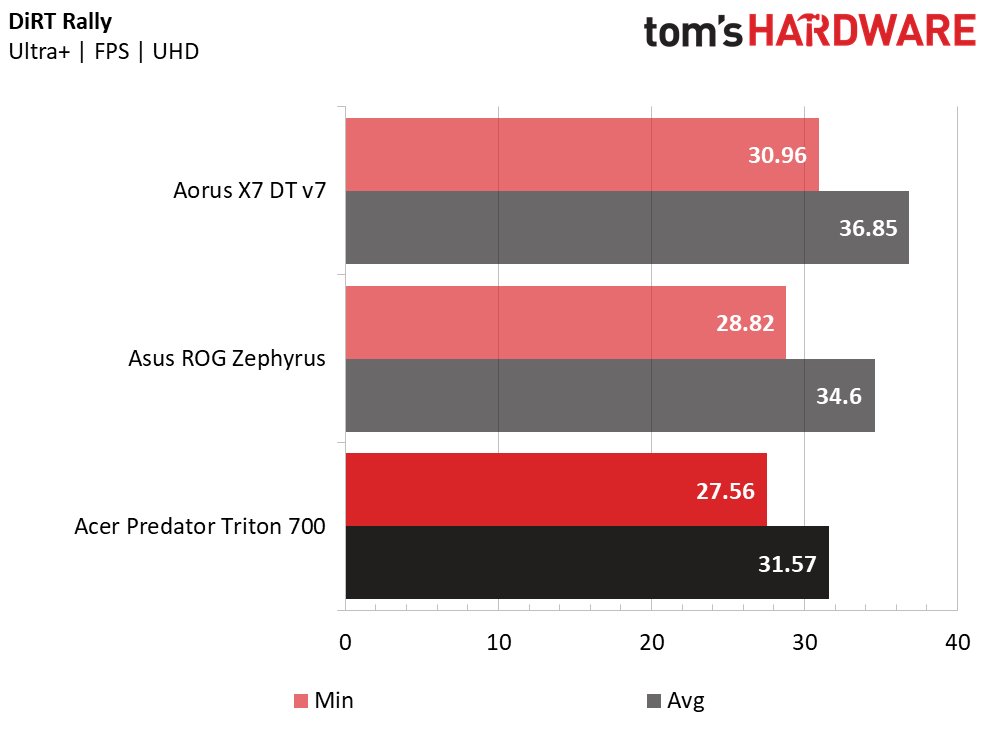
DiRT Rally is a racing title with a platform-based workload, so you won't need much GPU horsepower to run it adequately at FHD. The Triton performs well in excess of 60 FPS, running about 6% slower than the Aorus X7, matching the Asus Zephyrus, and outperforming the MSI Raider by about 7%. Even the Eurocom Q5 maintains 60 FPS.
At UHD, the Max-Q laptops suffer larger performance hits than the Aorus X7.
Grand Theft Auto V
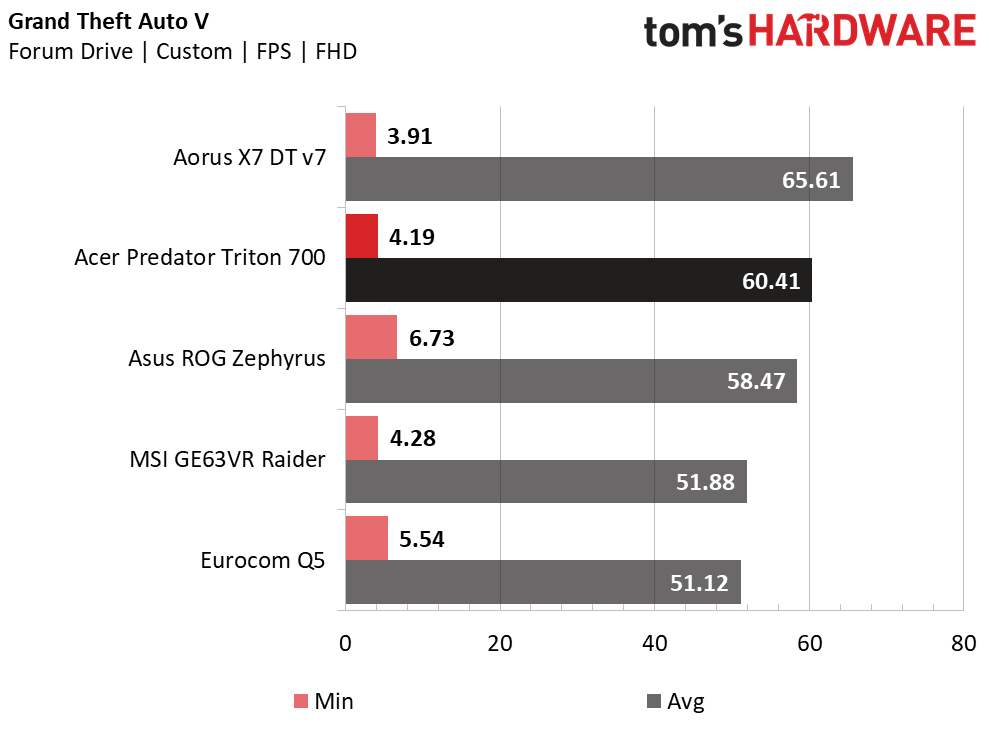
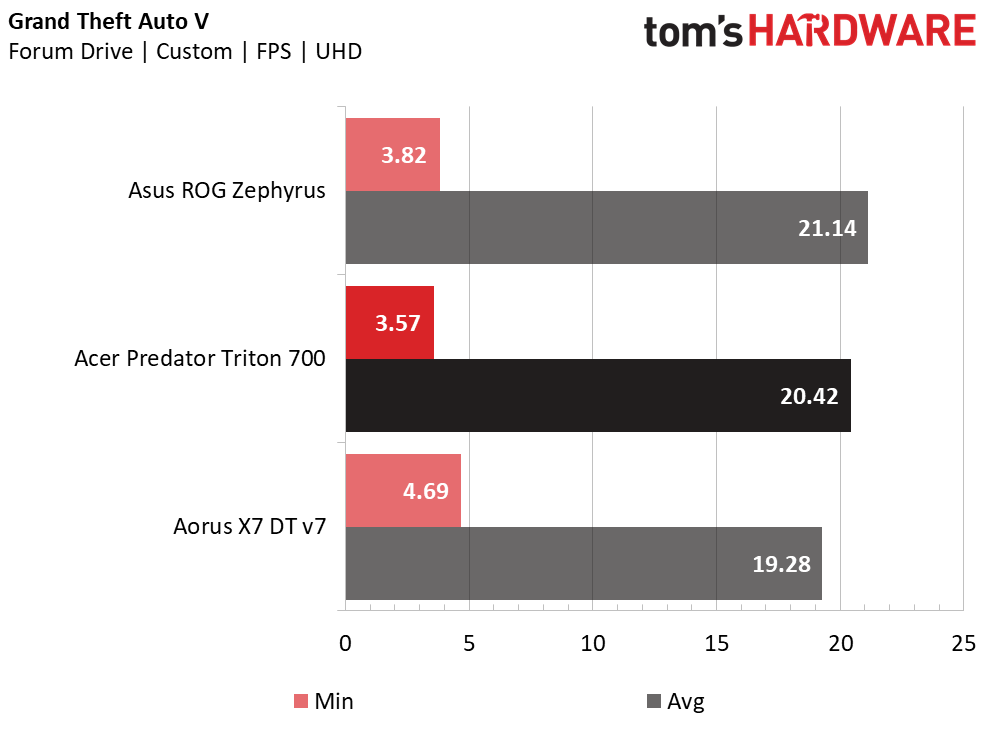
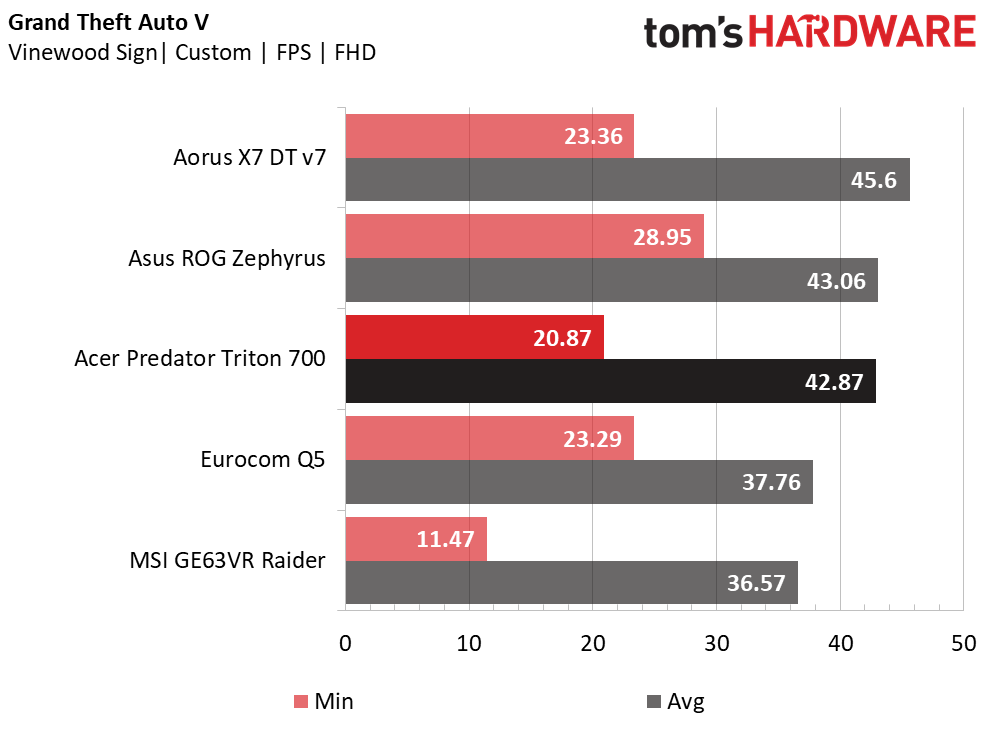
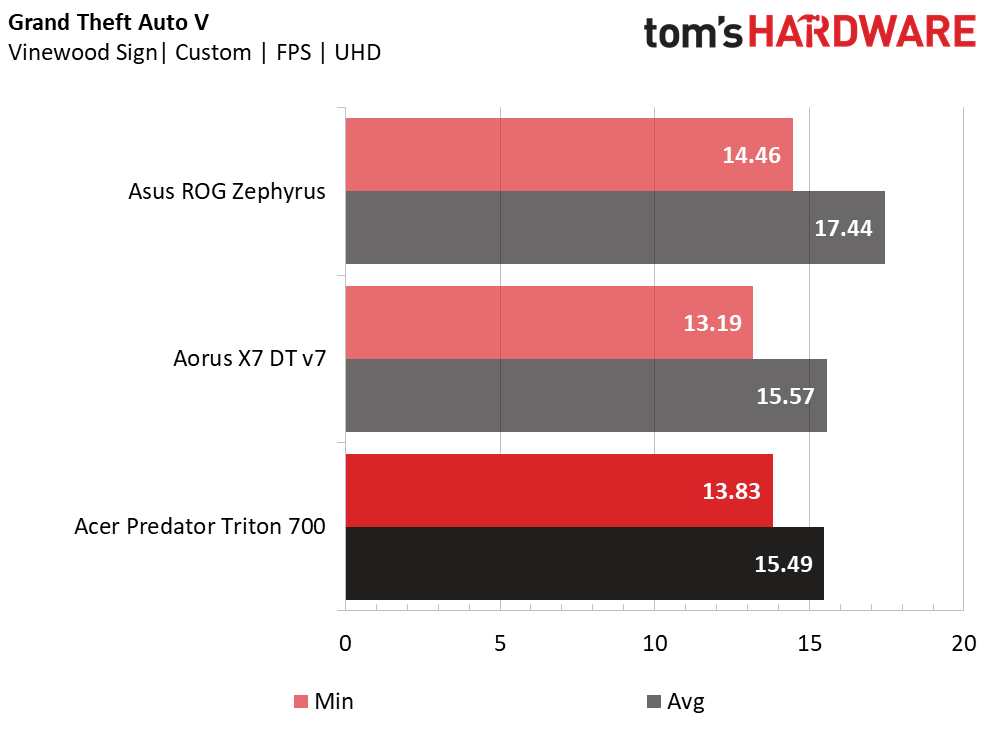
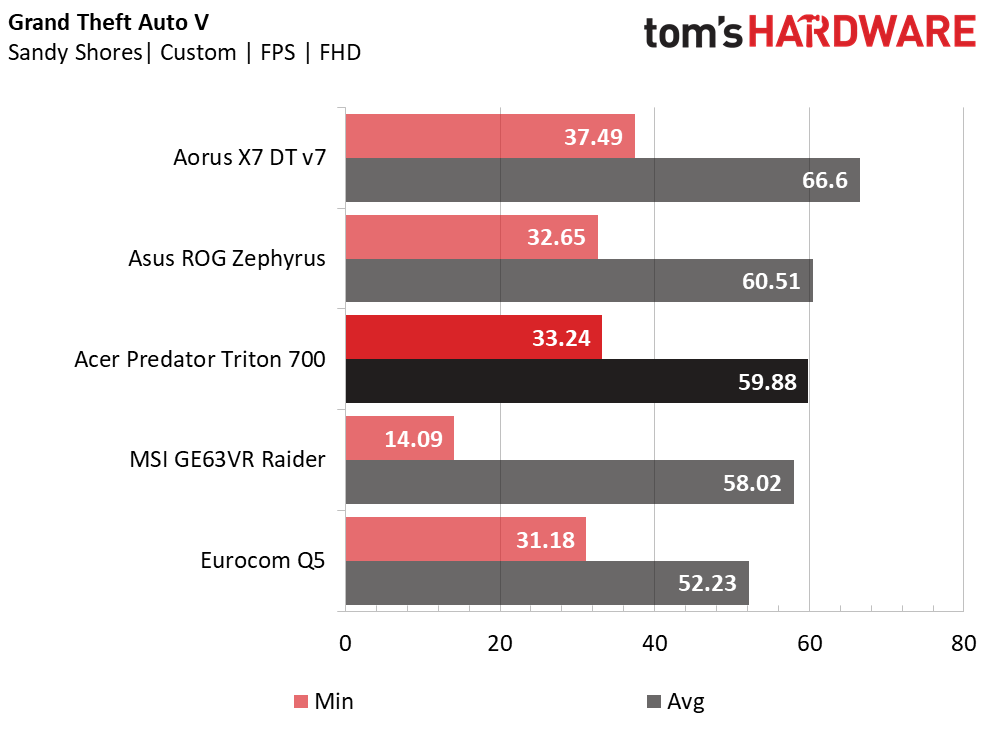
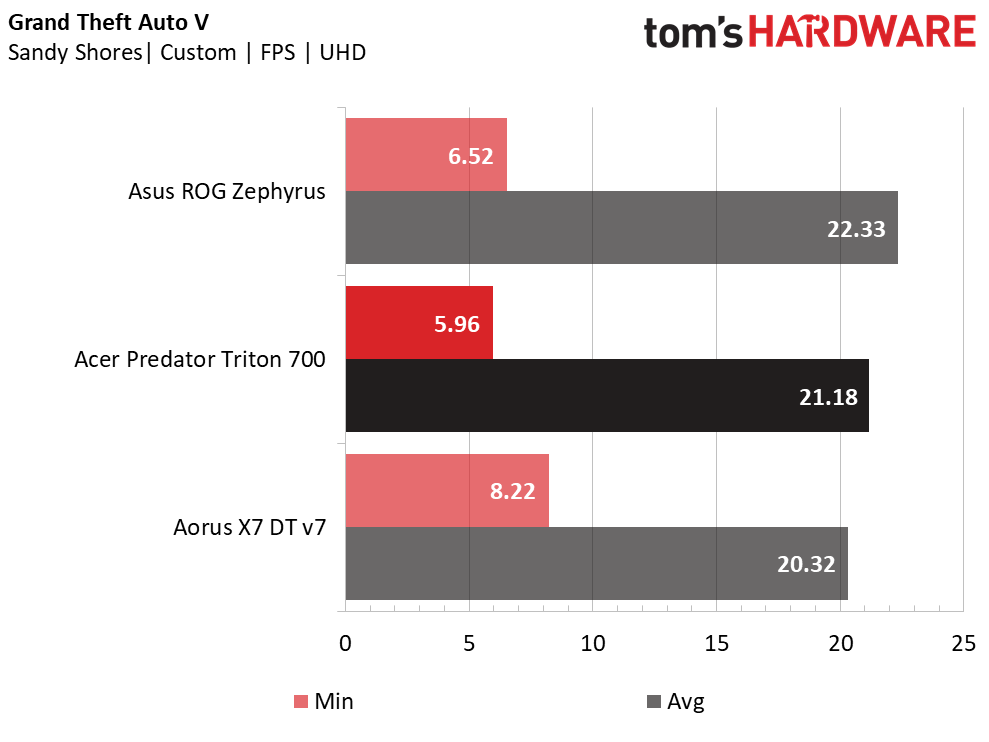
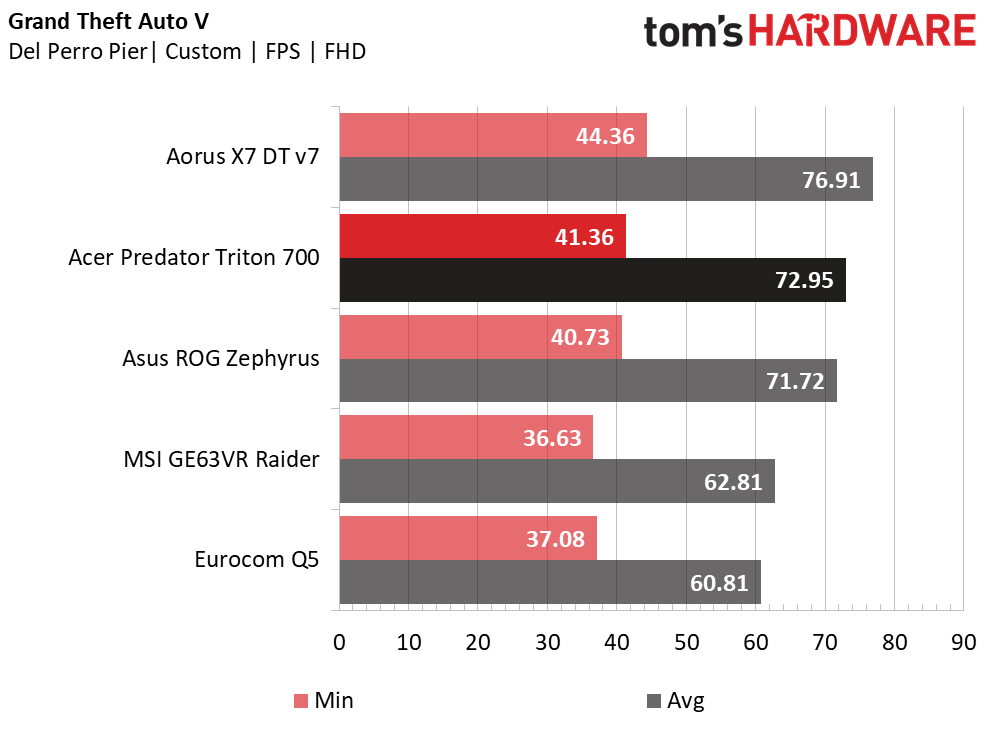
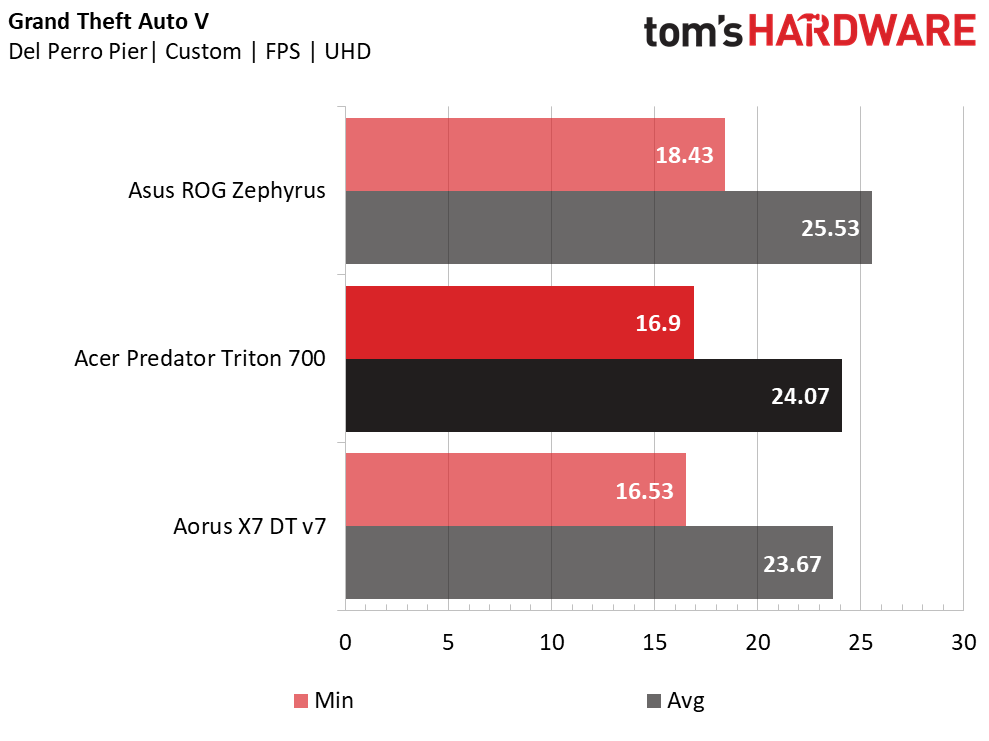
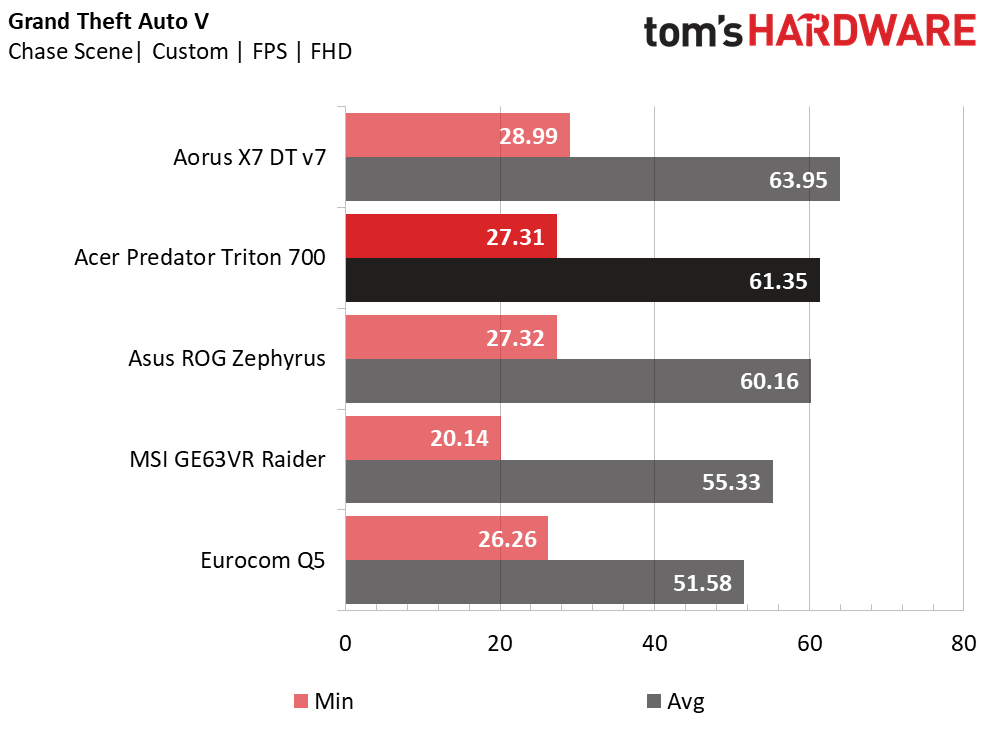
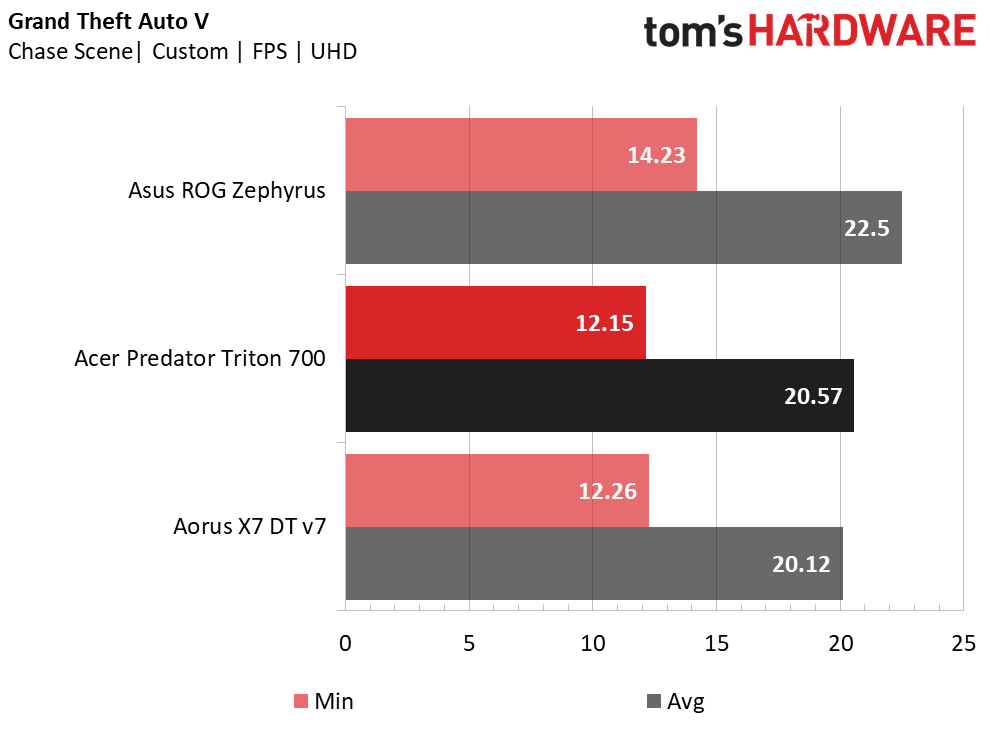
Grand Theft Auto V presents another demanding workload. It features a multitude of benchmark scenes, each with a different degree of intensity. The Triton's GTX 1080 Max-Q is capable of at least 60 FPS in almost all of the scenarios except the notorious Vinewood Sign scene; even the Aorus and its GTX 1080 cannot maintain 60 FPS here without dropping the graphical settings.
You won't find the same silky smooth performance at UHD, however. Previous benchmark titles illustrate a massive performance hit, but not to the this extent, where the frame rate is simply unplayable. The Triton and Zephyrus struggle to maintain even 20 FPS, and the Aorus X7 doesn't fare much better. If you don't want to reduce your graphical settings, you're better off sticking to FHD in GTA V.
GRID Autosport
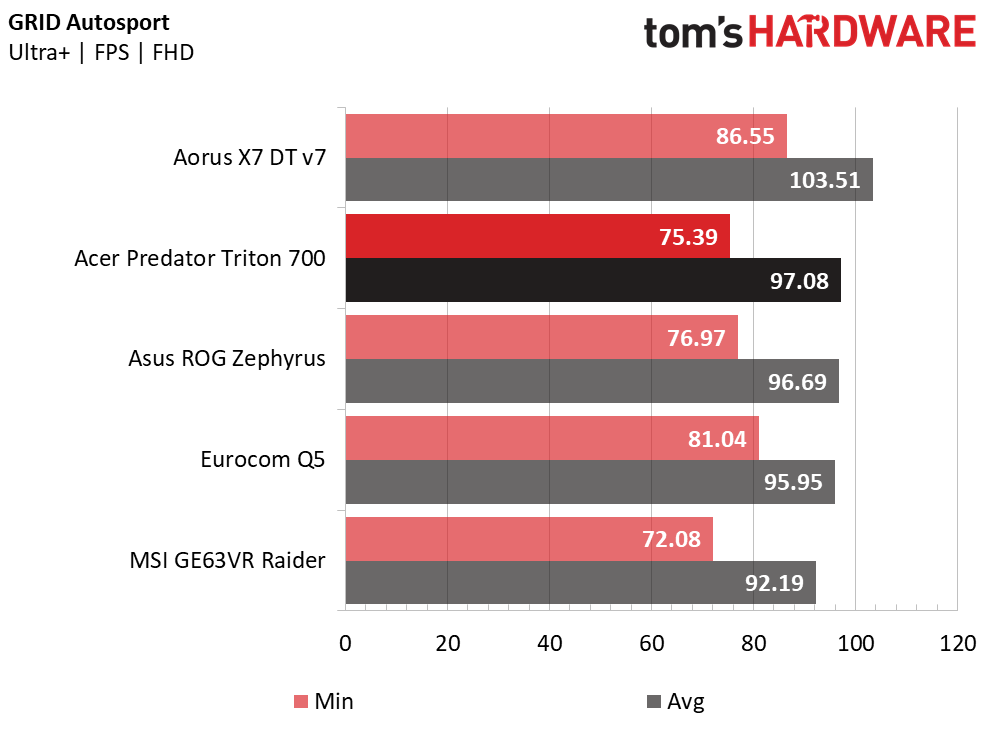
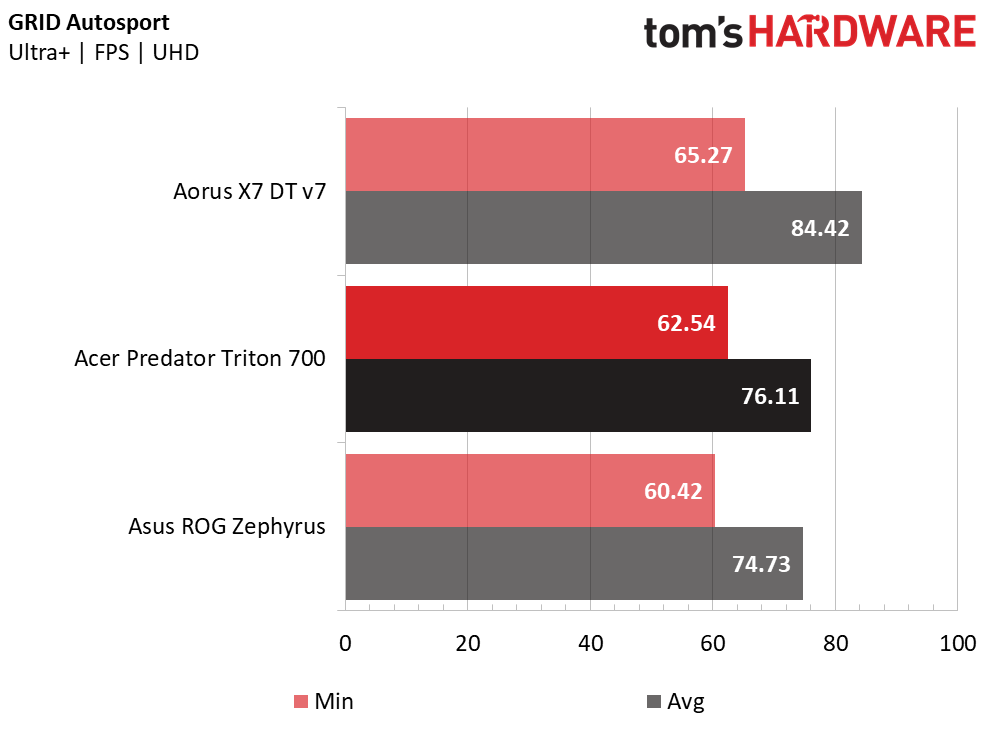
GRID Autosport is our second racing title, and it has a light platform-based workload. Not much GPU horsepower is necessary to achieve great performance in GRID at FHD, so it should come as no surprise that the featured high-end laptops blow the benchmark workload out of the water. The Eurocom Q5 and MSI Raider offer close performance because GRID's engine gives a slight edge to GPUs with high clock rates.
Using GPU-Z, we measured the Triton's boost clock rate, which was operating at around 1416 MHz, well under the maximum boost clock (1468 MHz). Meanwhile, the Q5's boost clock reaches 1379 MHz, its maximum boost clock. GRID's lighter workload doesn't ramp up the GTX 1080's clock speeds, but is difficult enough to necessitate the GTX 1070's maximum clock speed.
Running GRID at higher resolutions is a no-brainer. Both the Triton and the Zephyrus still maintain well in excess of 60 FPS at UHD, with the Triton's frame rate only dropping about 28%.
Hitman
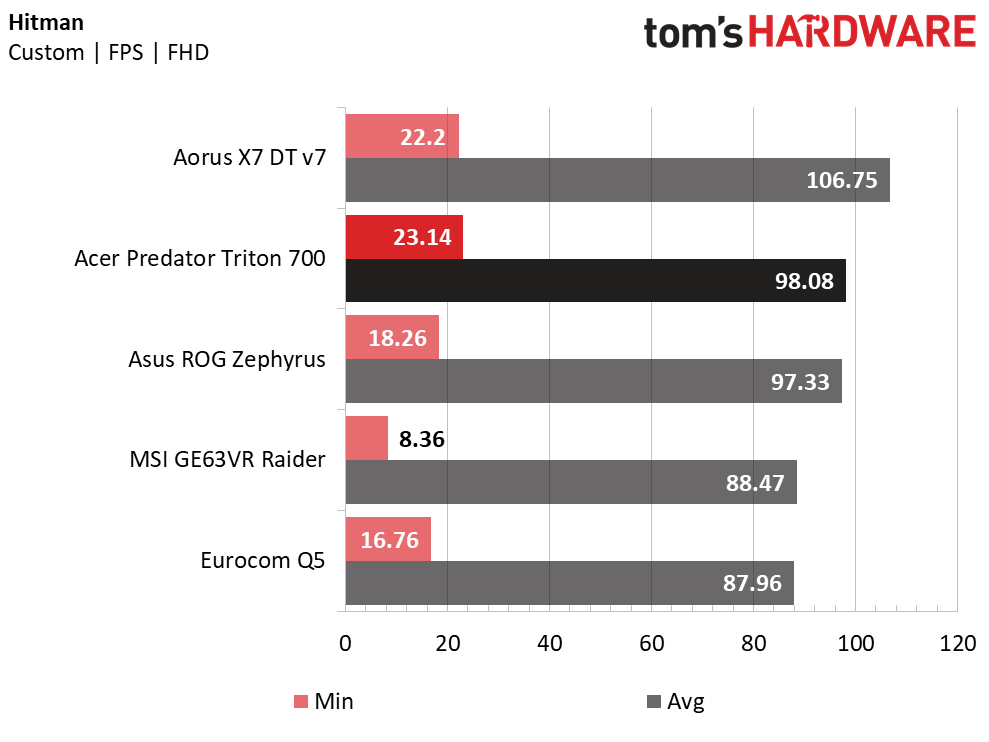
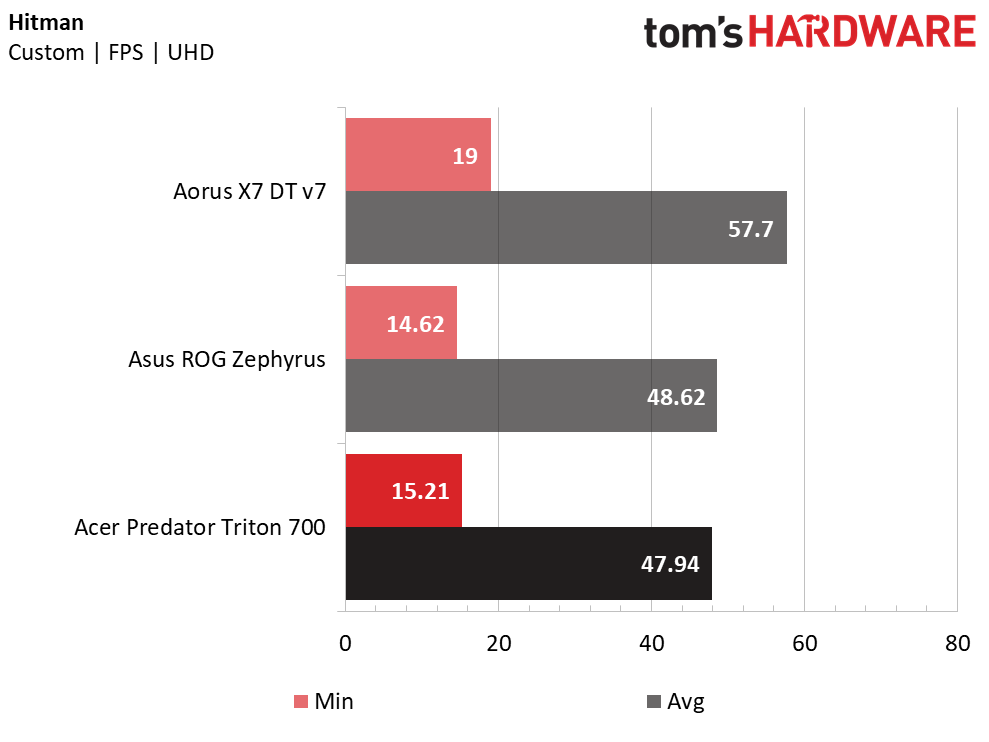
Hitman features a graphical benchmark with about the same intensity as GRID's, although a well-balanced configuration will have a more profound impact on performance than GPU clock rate. The GTX 1080 Max-Q laptops deliver outstanding performance, just a few frames short of 100 FPS, or about 90% of the Aorus X7's performance. The Triton 700 features a 120Hz display, so it would be wise to drop the settings slightly to reach this threshold.
The GTX 1080 Max-Q's extra performance is well spent at UHD, where the Triton delivers an impressive 48 FPS. The Aorus performs much better, just barely missing 60 FPS. At any rate, a GTX 1080 Max-Q laptop can easily reach 60 FPS with minimal tweaking, and a traditional GTX 1080 should reach this threshold with even fewer adjustments.
Metro: Last Light Redux
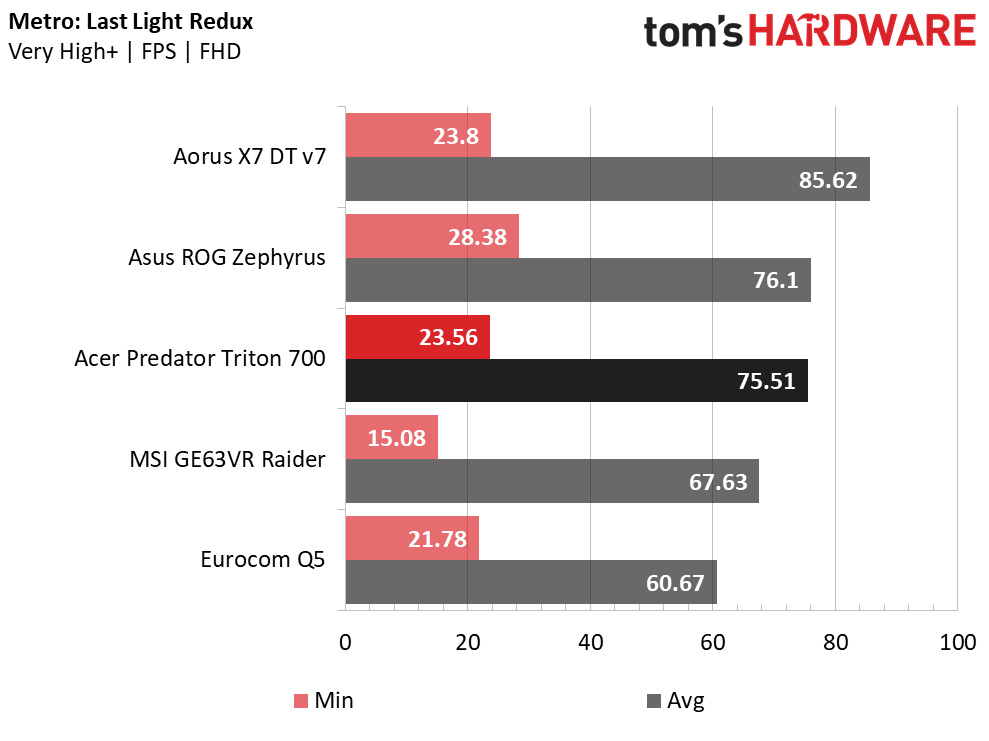
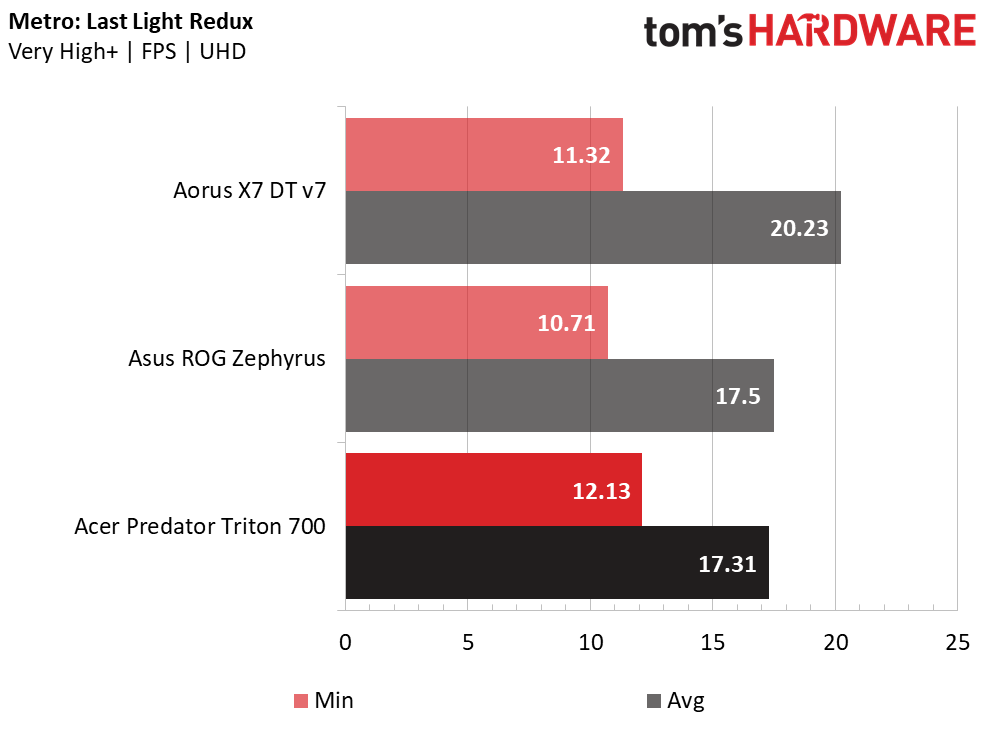
The next three titles are incredibly GPU-reliant, and it's almost fitting for us to start off with Metro: Last Light Redux, which used to push even the most powerful systems to their knees. Metro isn't a major threat nowadays; any laptop with at least a GTX 1070 will deliver a premium experience. As such, the Acer Triton breezes through Metro's benchmark at FHD. But is this grounds to up the resolution?
Unfortunately not. Performance in Metro doesn't scale well at higher resolutions, especially at UHD. Performance for the three GTX 1080 laptops, Max-Q or otherwise, falls far below playable frame rates.
Rise of the Tomb Raider
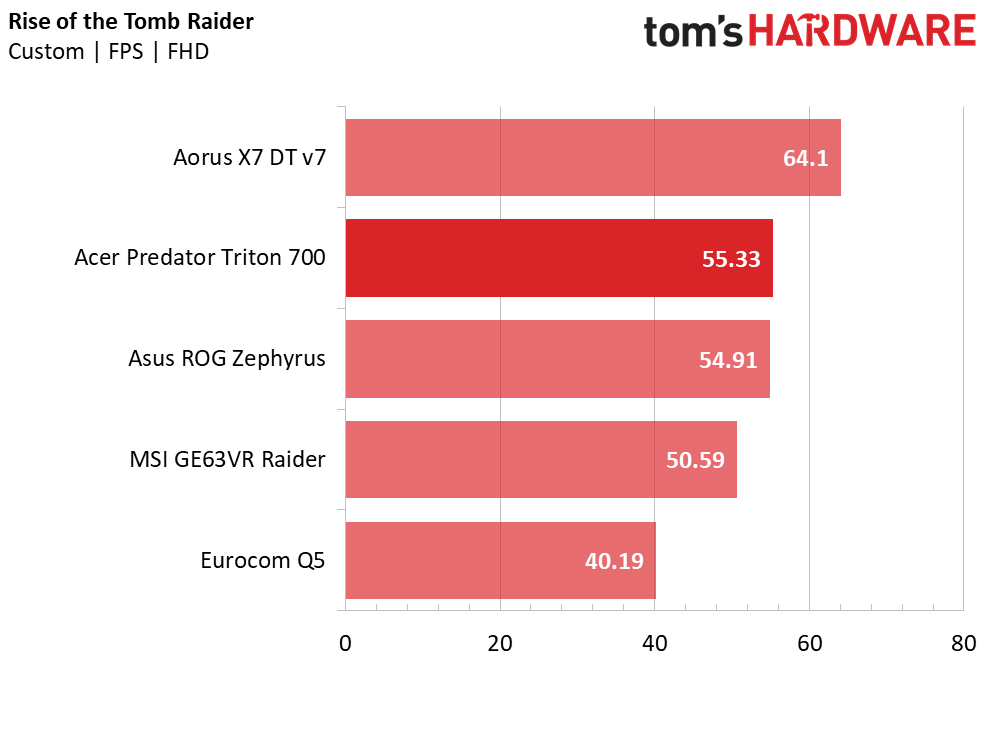
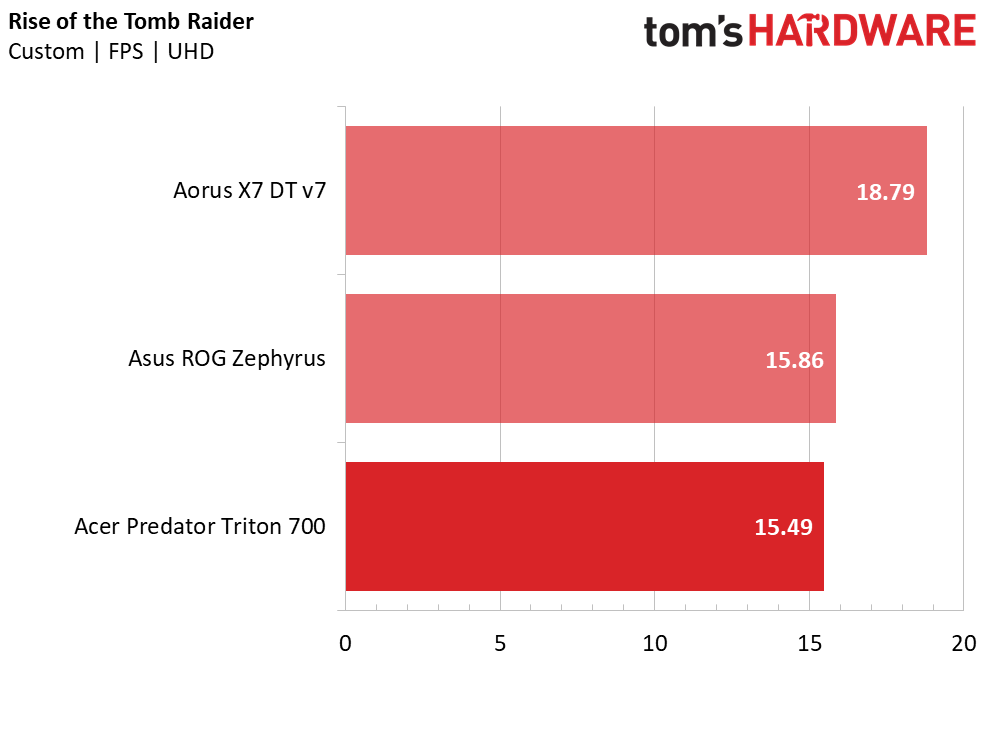
Rise of the Tomb Raider ups the ante, requiring at least a traditional GTX 1080 to maintain more than 60 FPS. As such, neither the Triton or Zephyrus hit the zone, but they come quite close. Minor tweaking will allow gamers to reach 60 FPS easily. On the other hand, the MSI Raider's frame rate drags behind by about 9% and will require more tweaks to reach 60 FPS. Unfortunately, the Eurocom Q5's GTX 1070 Max-Q falls behind even more.
Trying to play RotTR at UHD is a fools errand, even with a GTX 1080.
The Division
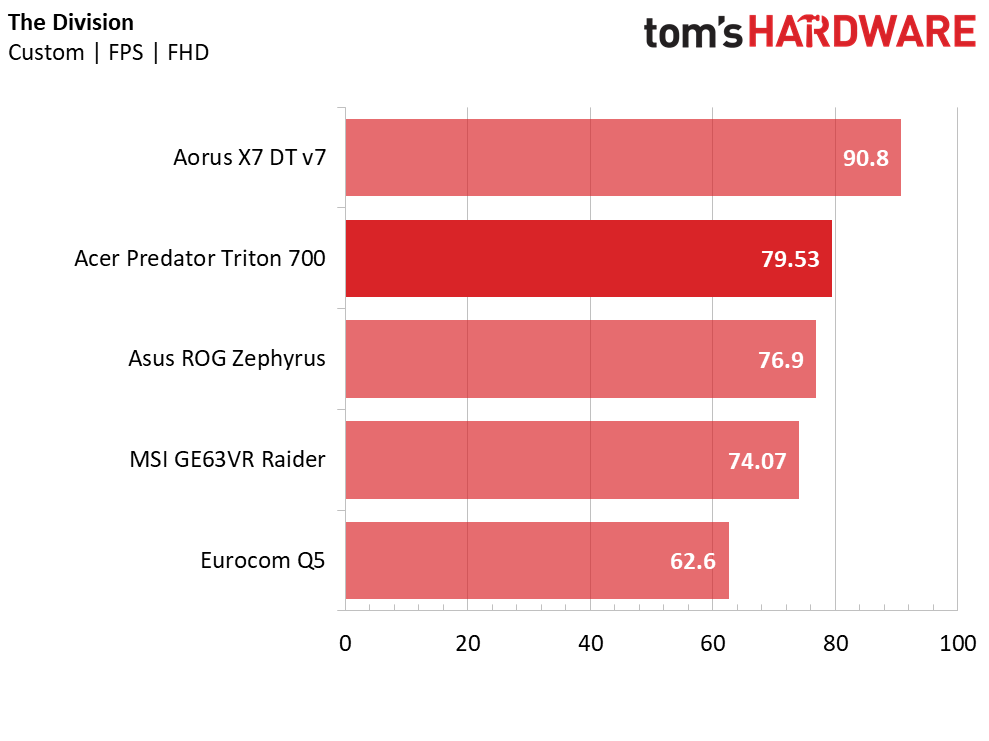
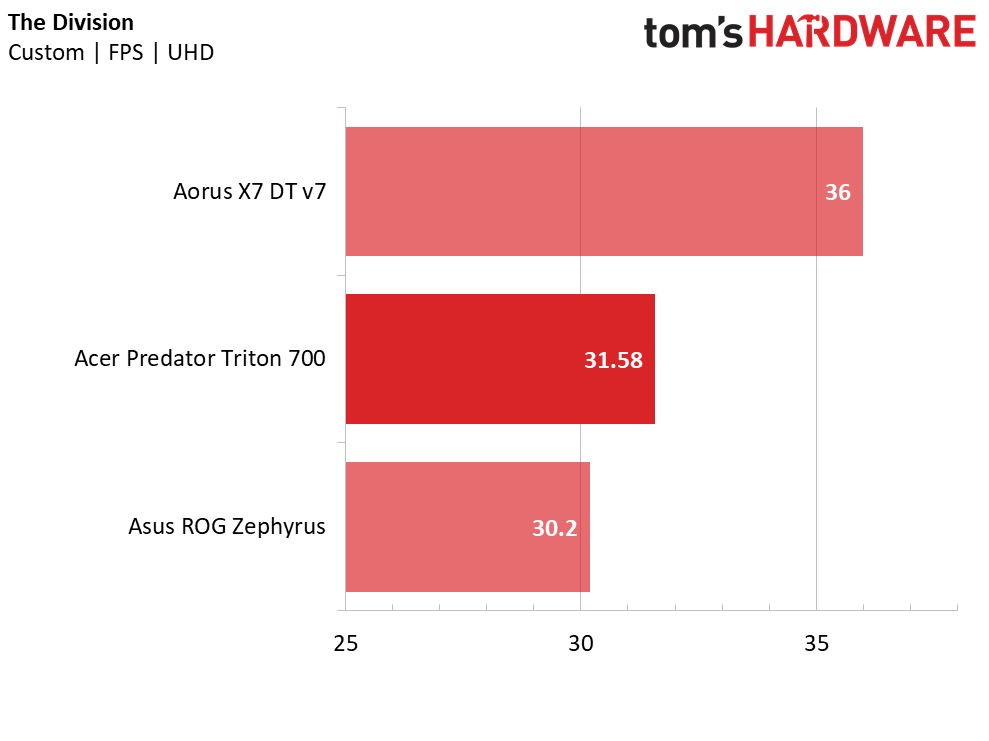
Our final GPU-dependent title is The Division. It doesn't impose the heavy demands of Ashes of the Singularity or RotTR, so you can expect excellent frame rates so long as you have at least a GTX 1070 Max-Q. The Triton provides 60 FPS with plenty of performance to spare.
Raising the resolution imposes a significant frame rate loss. Fortunately, the frame rate still remains over 30 FPS, which is what we'd consider the absolute minimum playable frame rate. UHD eliminates the need for anti-aliasing, so reducing it in The Division's graphical settings will improve performance significantly without losing visual fidelity.
Thief
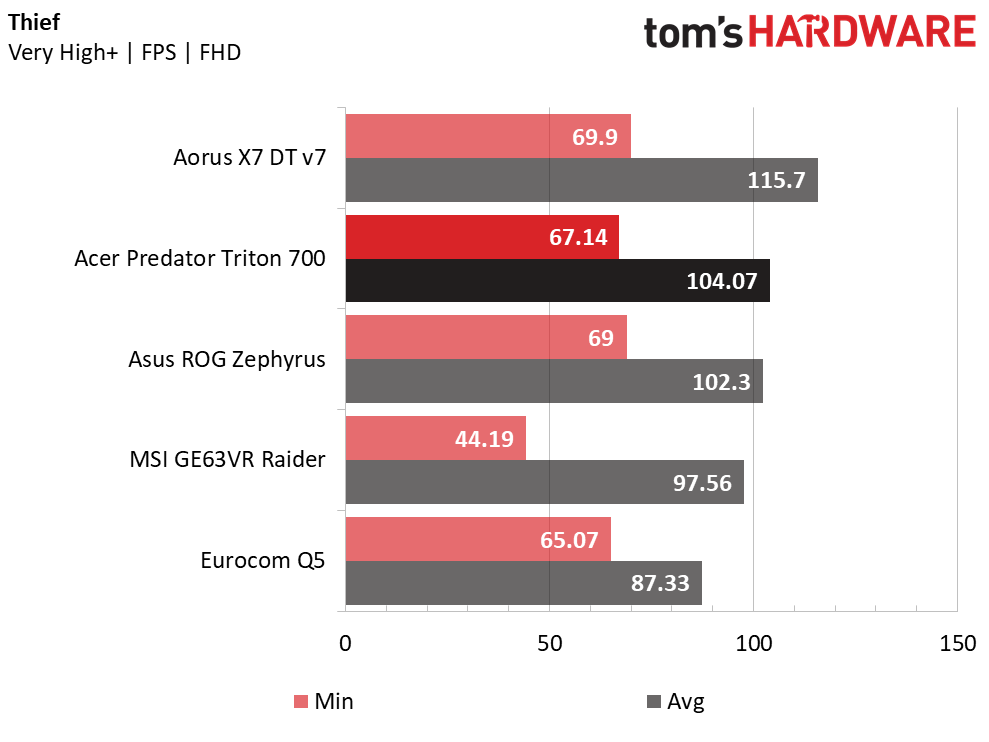
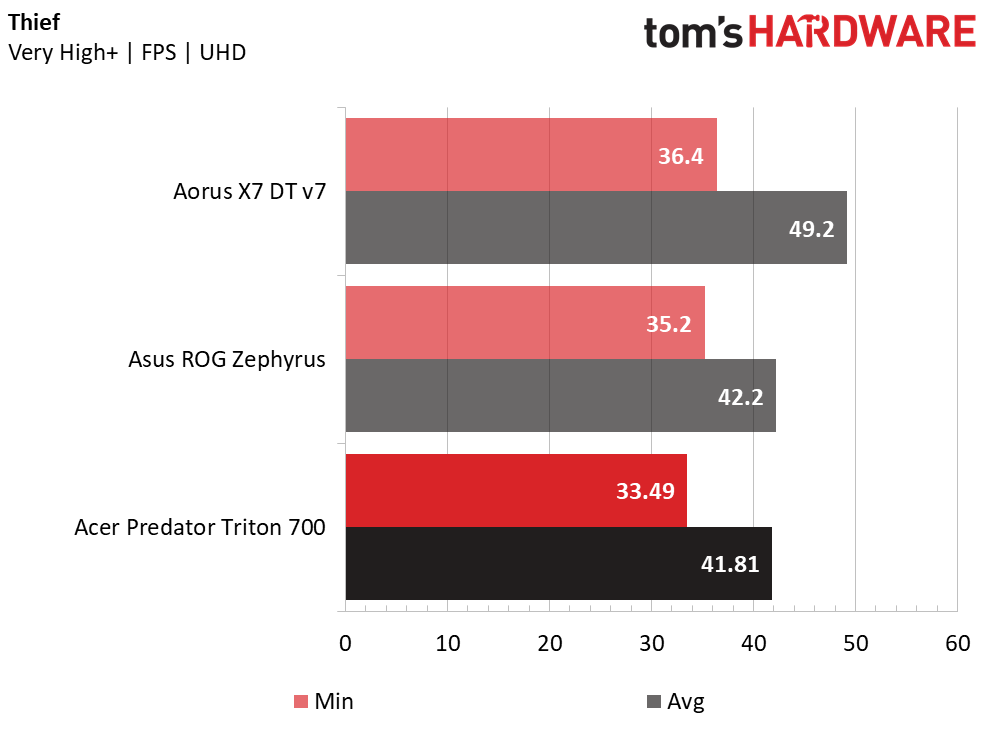
Finally, we benchmark Thief, whose platform-based workload is considerably easier to run than the last few resource hogs. Any moderately configured laptop can deliver an enjoyable experience at FHD, so Triton owners can crank up the settings to maximum without concern. If the Triton had a bit more CPU power, like the Aorus X7, its frame rate would come close to 120 FPS. Alternatively, you can reduce Thief's settings by a pinch.
With a game as easy to run as Thief, raising the resolution to UHD doesn't cause major headaches. The Triton still lands it at a respectable 42 FPS. By lowering anti-aliasing, you can easily enjoy close to 60 FPS at UHD.
MORE: Best Gaming Laptops
MORE: Gaming Laptop Previews
MORE: All Laptop Content
Current page: Gaming Benchmarks
Prev Page Synthetic Benchmarks Next Page Battery, Thermal & Display TestingStay On the Cutting Edge: Get the Tom's Hardware Newsletter
Get Tom's Hardware's best news and in-depth reviews, straight to your inbox.
-
derekullo Brick Tamland: I stabbed a guy in the heart with a Triton.Reply
https://www.youtube.com/watch?v=sHpMJJP7v_s
First thing that came to mind when I saw the title. -
g-unit1111 Why is it the smaller the laptop, the bigger the power supply? I have not been able to get this. My MSI laptop is about the same size as that Acer and it has a gigantic 5 pound brick as the A/C adapter.Reply -
Ninjawithagun The smaller Acer Triton has a GTX1080 which requires the larger 330W AC adapter, whereas having a GTX1070 would only require the 220W AC adapter, which is smaller.Reply -
kowens197 BUYER BEWARE- Mine was unbootable right out of the box, Acer said it would be over a month to try to repair it and refused to replace it.Reply -
koekkoe Not a single word about fan noise? There should be at least subjective evaluation, and preferably dB measurements compared to other devices in same device class.Reply